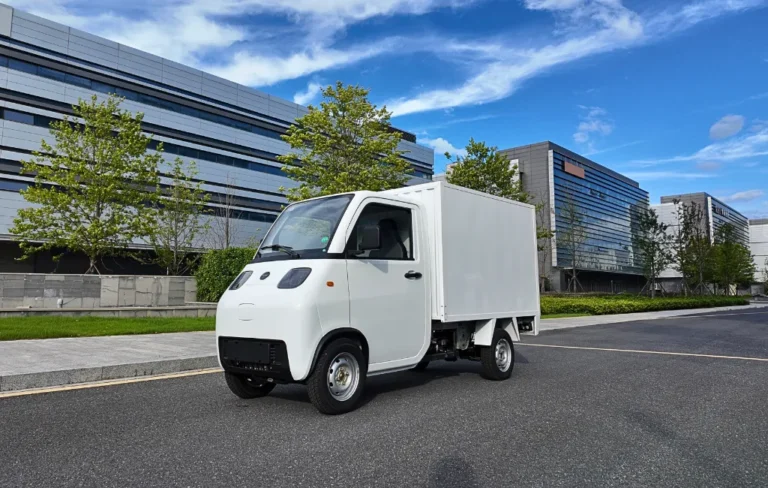Considering signing up for tour sales platforms? Check out our guide and find out everything you need to know before you get started.

Starting a tuk tuk tour business is an exciting adventure, but also full of challenges. Traditionally, many guides rely on “street sales” — positioning themselves in strategic spots around the city and approaching passing tourists to present their services.
Although this approach has worked for many years, it is becoming increasingly unstable and competitive. For those just starting out or looking to professionalize their business, it’s essential to explore new ways to attract customers and secure bookings.
One of the most powerful tools to face these challenges, and complement street sales, are online tour sales platforms. These platforms act as intermediaries between tour operators and customers, facilitating service promotion and booking management. If you’ve ever received a booking through one of these platforms or made a reservation yourself, you’re already familiar with the concept.
For customers, these platforms offer a simple and fast way to compare tourist activities and book with confidence. For operators, they represent an opportunity to reach a wider audience, increase visibility, and secure bookings.
In this guide, we’ll explain how these platforms work, share practical tips to increase your bookings, highlight important points to consider, and introduce some of the main companies in the sector. Ready to take the next step in your business? Let’s go!
How Tour Sales Platforms Work
Tour booking platforms are websites or apps that connect tour operators with potential customers. They act as digital showcases, where tours are presented with descriptions, photos, prices, and reviews, allowing travelers to compare options and book directly — often with just a few clicks.
For operators, these platforms offer a practical and effective way to promote their services to a global audience, without relying solely on in-person sales. By creating an account and listing their tours, operators become part of an ecosystem where thousands of people search for activities during their travels.
Although the process varies slightly from platform to platform, the general workflow includes:
1. Registration and Verification
The first step is to register on the platform, providing basic information such as company name, contact details, and bank information. You’ll likely be asked to submit your Registo Nacional de Agentes de Animação Turística (RNAAT) and legally required insurance documents. Some platforms may also require signing a contract.
2. Tour Listing
Once registered, you can start adding your tours. While each platform has its own system, all require essential details such as:
- Tour name
- Duration and itinerary
- Price and inclusions/exclusions
- Start and end points
- Attractive description
- High-quality photos
You’ll also need to define availability: operating hours, maximum bookings per time slot, and minimum advance notice for reservations. Don’t forget to set your cancellation policy.
3. Review and Approval
After submitting your tour, it may go through a review process. If it doesn’t meet the platform’s requirements, you’ll receive a notification with the reasons and, often, suggestions for correction. If the issue isn’t clear, it’s advisable to contact support.
4. Commissions and Payments
Listing tours is usually free, but platforms charge a commission per booking, typically between 25% and 30% of the tour price. Payments are made to the bank account provided, but payment frequency varies — some platforms pay weekly, others monthly.
5. Receiving Bookings
Once your tours are online, you’re ready to start receiving bookings. Each time a customer books, you’ll be notified by email with the reservation details.
Tips to Get More Bookings
To increase bookings through tour sales platforms, it’s essential to focus on key elements that influence customer decisions. One of the most important is photo quality. Clear, well-lit images that convey the tour experience help capture attention and spark interest. Show the tuk tuk, the places visited, and the happy moments with participants.
Your tour description should be both appealing and clear. More than just listing the itinerary, it should convey what the customer will see, feel, and learn. Use accessible and inspiring language, focusing on the benefits of the experience.
Reviews are another decisive factor. Encourage satisfied customers to leave feedback and always respond, even to criticism, with professionalism and empathy. A strong reputation can be the deciding factor for hesitant customers.
Keeping your availability updated is equally important. Tours with inconsistent or unavailable schedules are less likely to receive bookings. Make sure your calendar is accurate and reflects your actual operations.
Offering flexible cancellation policies and allowing last-minute bookings can be a competitive advantage. Many travelers appreciate the ability to adjust their plans, and flexibility builds trust.
If the platform allows, translating your content into multiple languages is a great way to attract international customers. A description in the customer’s language improves navigation and increases the likelihood of booking.
Finally, monitor your tour performance. Regularly review the data provided by the platform and use it to adjust and improve your offer.
Points to consider
While tour booking platforms offer many advantages, it’s important to be aware of some challenges and limitations.
One major risk is overbooking. This can happen especially when a company has few tuk tuks and is listed on multiple platforms. Receiving more bookings than you can fulfill is a real possibility and can lead to difficult situations. In such cases, the operator must decide whether to accept the risk and, if overbooking occurs, either transfer the tour to a trusted partner or cancel it. Both options have consequences: the first requires a reliable network, and the second can result in loss of money and reputation.
Another consideration is the high commission fees charged by platforms. While these costs may be justified by the visibility and booking volume, it’s important to assess whether the model is financially sustainable. Additionally, some platforms don’t allow operators to increase tour prices to offset the commission, limiting profit margins.
Efficient reservation management is also crucial. Using a centralized calendar or a management tool that syncs across platforms can help avoid scheduling conflicts and simplify daily planning. At the very least, you should maintain an Excel document listing all your bookings.
Lastly, pay close attention to contract terms and platform policies. Some platforms have specific rules regarding cancellations, refunds, customer communication, or even the use of images and text. Reading carefully and clarifying doubts before committing is essential to avoid unpleasant surprises.
Main Platforms
There are several tour sales platforms available, but two of the most well-known and widely used are Get Your Guide and Viator/TripAdvisor. Both offer high visibility and booking volume, but have distinct features worth considering.
Get Your Guide
Get Your Guide is one of the largest tour booking platforms globally, with a strong presence in Europe and a growing reach in other regions. The platform invests heavily in digital marketing, ensuring good visibility for listed operators.
Advantages
- Intuitive interface for operators and customers
- Strong presence in European markets
- Ability to highlight tours with good reviews
- Availability and calendar management tools
Considerations
- High commission (typically 25% to 30%)
- Strict approval process for new tours
- Some limitations on pricing and policies
Viator / TripAdvisor
Viator is TripAdvisor’s tour experience platform, giving access to millions of users who already use TripAdvisor to plan their trips. It’s a great option for those looking to benefit from the reputation and traffic of this tourism giant.
Advantages
- Integration with TripAdvisor, increasing exposure
- Highly valued review system
- Wide international reach
Considerations
- High commission, similar to Get Your Guide
- Less control over tour presentation (some content is auto-generated)
- Harder to stand out without consistent reviews
Conclusion
Entering the world of tour sales platforms may seem daunting at first, but it’s also a great opportunity to grow your business sustainably and professionally. These tools allow you to reach customers who might never pass by your street sales point — and that alone represents huge potential.
As we’ve seen throughout this guide, it’s essential to understand how platforms work, know how to make your tours stand out, and be aware of the risks and limitations involved. With organization, attention to detail, and a strategic approach, you can turn these platforms into a solid and profitable sales channel.
If you’re just starting out, remember: you don’t need to be on every platform at once. Choose one or two that make sense for your business, test, learn, and adjust. Over time, you’ll gain experience and confidence to expand.
Most importantly, focus on the quality of the experience you offer your customers. A well-presented and well-managed tour will always be your best business card — whether on the street or online.
You Might Also Like

Essential Tips to Improve the Quality of Your Tuk Tuk Tours
Discover 6 essential tips to enhance the quality of your tours and attract more customers.
Read more

Exploring New Markets with the L5 Limo GT
Explore alternative markets where the L5 Limo GT can be applied, helping you differentiate and complement your offer.
Read more

Tour Sales Platforms: The Complete Guide
Considering signing up for tour sales platforms? Check out our guide and find out everything you need to know before you get started.
Read more









